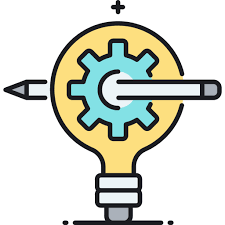Teaming and evaluation play an important role in the current challenge of organizational effectiveness. It is extremely important that companies improve their performance and enhance their bottom line by building effective, well-designed teams. Teams must be comprised of people who are not only talented and committed, but who can work together productively. Organizations that seek to achieve these goals will likely face significant organizational obstacles. The key is for organizations to recognize their limitations and to understand how to overcome these obstacles.
Many organizations spend excessive amounts of time developing rigid structures that do little to optimize teamwork and collaboration. In many cases, these rigid structures are designed to “glam” up the organization and make it appear as a forward-looking firm. Some of these “good” teams actually perform worse than ineffective teams due to poor design. In addition to the problems with structure, many organizations learn the hard way that teamwork and organizational learning cannot be relegated to the hands of a few individuals.
How can a company effectively enhance teamwork through processes? The first step is to understand how the T7 Model of Team Building can help organizations learn how to build stronger and more effective teams. The T7 Model is a powerful tool that provides insight into how to increase productivity, increase organizational flexibility, reduce costs, improve relationships, raise revenues, and attract and retain good team members. The model was developed by a team of researchers interested in learning what went wrong with teams in the past and how to improve the performance of teams today. The researchers examined hundreds of cases in which teams conducted ineffective or even harmful tasks. The resulting model was then refined to take into account the specific needs of a business unit.
One important aspect of the T7 Model is learning and understanding how various forms of collaboration actually accomplish things. Team building activities should not just involve creating teams that perform similar tasks; rather they should foster learning and understanding across the team as a whole. For example, the Team Building Activity that was developed by the Teamstersometric Learning Initiative fostered a deeper understanding and appreciation of teamwork among employees. This activity allowed employees to experiment with different activities that would take them outside of their comfort zones and provided an opportunity for employees to experience brainstorming and other informal activities that were often ignored or shunned in the past. As a result, many organizations have reported that the creation of the Team Building Activity revitalized and revitalised their teams, allowing them to work more productively than ever before.
Another important factor regarding the Team Building Activity is the structure of its implementation. It is important for an organization to adopt activities that foster learning and creativity, as well as providing an environment where individuals feel safe and comfortable to be themselves. To this end, the Team Building Activity should include activities that encourage participation, like role plays and case studies, as well as the development of problem solving capabilities and interpersonal skills. The activity should also allow teams to take risks, build working relationships, as well as take on a variety of challenges, each of which builds on individual strengths and develops team skills. It is also important for an organization to implement these activities in well-designed projects that use diverse groups of people from diverse disciplines and experiences, as a team building approach that can span organizational boundaries.
Finally, organizations need to be careful when defining teaming relationships. While a strong relationship is desirable, it is equally essential to ensure that the organization has a clear understanding of what forms of teaming work best for it. For instance, different types of teamwork are sometimes necessary to address a particular problem, depending on the task at hand. Likewise, different types of relationships may be necessary or even desirable between teams when they are operating in different settings, such as when operating within an organizational structure or operating at a scale.
In essence, the Team Building activity should seek to create more productive work teams by fostering a sense of belonging and development of skills. It should provide a number of opportunities for groups to come together and engage in activities that foster learning and interaction. At the same time, such events should not be relied on by managers to solve organizational problems on their own. Rather, it is vital for managers to understand the nature of their teams and the importance of collaboration and teaming when operating at large organizational scales. Ultimately, teams need to learn how to identify their core functions, as well as how they can share power and resources, while still emphasizing individual and team accountability for the ultimate results.
